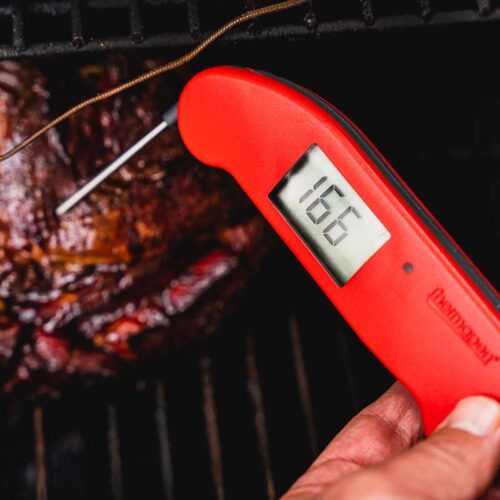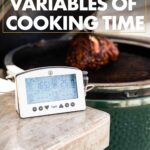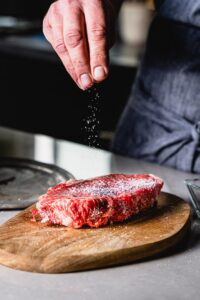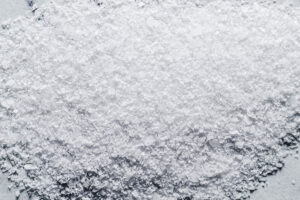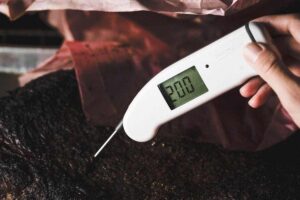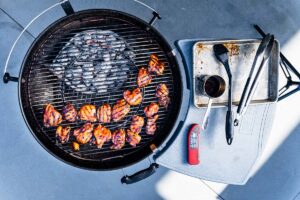How long it takes something to cook is influenced by several variables, and understanding these factors helps to appreciate why cooking is not a uniform process, given the uniqueness of each situation. Instead of going by a specific time to rely on when a dish is finished, cook to a temperature, which is a much more precise method.
The 10 Variables of Cooking Time
- Size & Thickness of the Food
It’s not so much the weight of the food, but the thickness, shape and fat content that play a big role in how it cooks. If the food is thinner and has more surface area, it will cook more quickly than a thick piece of meat. The shape also changes how air flows over it, affecting cook time. - The Starting Temperature of the Food
A dish or meat right out of the refrigerator will be much colder than if you let it temper (come to room temperature). It will also take longer to come up to temperature when it is cooler in your kitchen in the winter. - Weather
Outdoor weather conditions have a noticeable effect on cooking times. High humidity slows moisture evaporation from foods. Extreme cold or heat forces ovens and smokers to work harder to maintain proper temperatures, slowing cooking. And windy days facilitate more indoor heat loss through airflow, making ovens and smokers less efficient. - Altitude
A higher altitude will cause foods to cook more slowly. Higher altitudes lower the boiling point of water causing liquids to heat more slowly. For example, water boils at 203°F at 5,000ft above sea level rather than 212°F, which delays cooking processes like boiling and simmering. - The Cooking Vessel
Different materials conduct and distribute heat differently. For example, a cast iron Dutch oven will retain much more heat for longer than a 1 layer aluminum pan. - Thermometers in Ovens, Smokers and Grills
Many ovens, smokers, and grills come with built-in thermometers to gauge the internal temperature. However, the reality is that very few of these default thermometers aare accurately calibrated, especially after a lot of use. Their readings could be slightly off or wildly inaccurate by as much as 50-100 degrees. - Thermometer Accuracy
Probably the most important when you cook to temp. Both the thermometer that measures the temperature of your smoker or oven, and also the thermometer that you use to measure the internal temperature of the food, both need to be accurate. Your cooking accuracy is only as good as your thermometer, which is why high-quality thermometers are worth investing in. - Cooking Method and Positioning
Indirect heat (in an oven/smoker) cooks more evenly since the food is surrounded by heated air. Direct heat (grilling) can create desirable searing but cooks unevenly.
Proximity to the heat source also impacts cook times – the closer the surface is to the flame/element, the more intense and quick that side will cook. Getting too close risks burning the exterior before the interior is done. - Your Cooker, Smoker or Oven
The design and materials of the particular oven, grill, or type of smoker impact temperature regulation and heat circulation which in turn affects cooking time – more insulation, convection airflow, and consistent temperature control all help accelerate cooking. Cooking with your oven’s convection fan can speed up cook times by about 25%. - Opening Lid / Door
Every time the heated chamber is opened (smoker lid or oven door), built-up heat and smoke escape, dropping the temperature immediately. Therefore opening the cooking appliance frequently causes heat and moisture levels to regularly drop, forcing extra time to bring the conditions back up to target levels and complete the cooking process. Limiting openings as much as possible preserves the right environment and prevents extending cook times.

